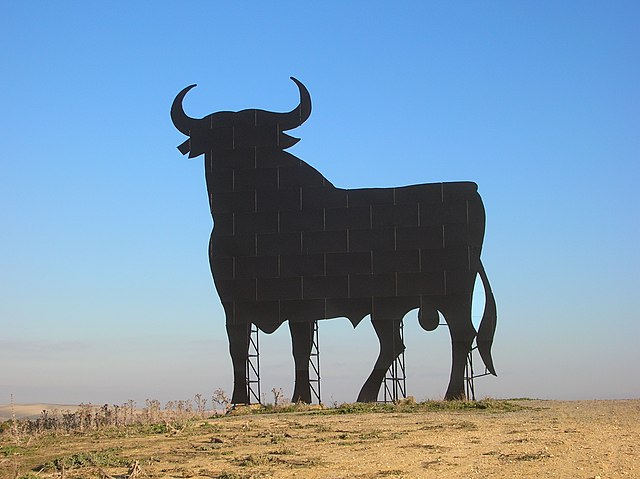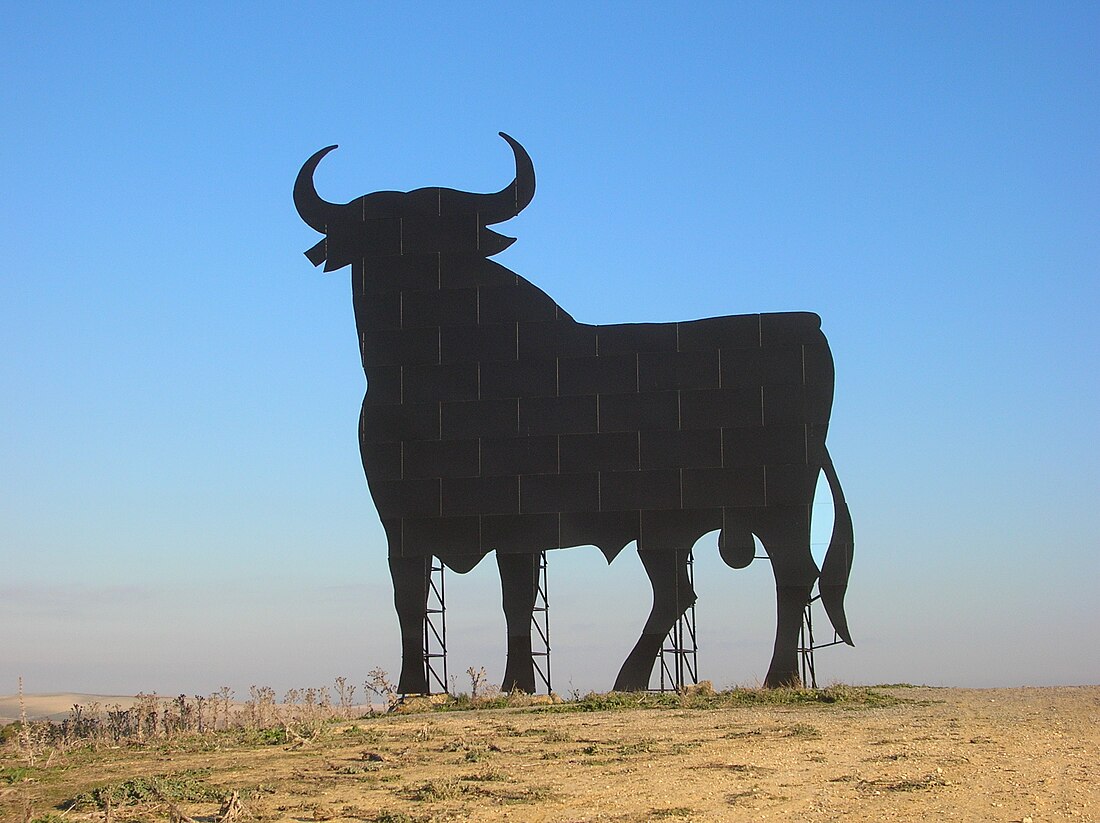Top Qs
Timeline
Chat
Perspective
Outdoor advertising
Name given to the advertising in public spaces From Wikipedia, the free encyclopedia
Remove ads
Outdoor advertising or out-of-home (OOH) advertising includes public billboards, wallscapes, and posters seen while "on the go". OOH advertising formats fall into four main categories: billboards, street furniture, transit, and alternative.[1]
This article has multiple issues. Please help improve it or discuss these issues on the talk page. (Learn how and when to remove these messages)
|

Advertisements are commonly placed by large companies like Clear Channel Outdoor, Lamar Advertising Company and Outfront Media.
Remove ads
Digital

Digital out-of-home (DOOH) refers to dynamic advertising media distributed across different locations. DOOH advertisements might be purchased through programmatic platforms which ask marketers to specify desired audience characteristics. These platforms then attempt to automatically locate advertising space to reach that audience. These platforms may allow buyers to plan, execute and monitor campaigns across multiple media platforms.
Remove ads
Printed
Summarize
Perspective
Printed out of home refers to static media distributed across physical spaces.[2] Examples include:
- Aerial advertising: Aerial advertising includes towing banners via a fixed-wing aircraft as well as airships like blimps and other airborne inflatables above beaches, events and gridlock traffic.[3]
- Billboard bicycle: is a new type of mobile advertising in which a bike tows a billboard with an advertising message. This method is a cost-efficient, targeted, and environmentally-friendly form of advertising.[according to whom?]
- Brochures, pamphlets, and flyers: Providing printed material, either in an information display or by hand in public gathering spaces, is a targeted method to advertise to a specific audience.
- Billboards: (or Bulletins) are usually located in highly visible,[4] heavy traffic areas such as expressways, primary arterials, and major intersections. In the US bulletins are usually illuminated. The ad artwork, commonly digitally printed on large vinyl-coated fabric membranes, is often "rotated" by the outdoor plant operator amongst several locations in a metropolitan area to achieve the desired reach of the population as defined in the sales contract. This is the largest standard out of home advertising format, usually measuring at 14ftx48ft in overall size.[citation needed]
- Bus advertising includes advertising placed directly buses, as well as on bus-related infrastructure such as bus shelters or benches.[citation needed]
- Mobile billboard can stand freely and can be moved to different locations as needed. This product can also be used a inflatable movie screens.[citation needed]
- Poster: Standardized poster formats measuring 12'3" x 24'6"; formally known as a 30-Sheet Poster.[citation needed]
- Walking Billboards: These billboards are strapped on to the human shoulder and are carried along the targeted geographic area.[clarification needed]
Space advertising, by use of an array of small satellites that reflect sunlight, has been evaluated by researchers at the Skolkovo Institute of Science and Technology.[5]
Remove ads
Regulations
Summarize
Perspective
United States
- The states of Vermont, Hawaii, Maine, and Alaska prohibit all billboards.[citation needed]
- The other 46 states permit multiple forms of OOH advertising.[citation needed]
- Billboards are regulated by all levels of government. The regulatory framework, created by the federal Highway Beautification Act (HBA), calls for billboards to be located in commercial and industrial areas. Billboard permits are issued by state and local authorities. Under the Highway Beautification Act, states have strong regulatory powers including the authority to ban billboards.[6]
- Most states have taken steps to regulate digital (electronic) billboards, which feature static images that change (typically) every six or eight seconds. In 2007, the Federal Highway Administration (FHWA) issued Guidance to the states regarding regulation of digital billboards. Scenic America challenged the federal Guidance in federal court on procedural grounds. On June 20, 2014, US District Court Judge James E. Boasberg dismissed this case, with prejudice.[7]
- Regulations governing digital billboards prohibit animation and scrolling. Digital billboards are equipped with light sensors to adjust billboard lighting to surrounding light conditions to avoid glare, per the industry code.[8]
Brazil
São Paulo, Brazil, established an almost total outdoor advertising ban in 2006. The ban required that all billboard and banner advertisements be removed and that store signs be greatly reduced in size and prominence.[9]
Switzerland
The Swiss municipality of Vernier banned outdoor advertising.[10]
Finland


Outdoor advertising in Finland is subject to license. According to section 52 of the Finnish road law outdoor advertising along roads is forbidden in principle, but a Centre for Economic Development, Transport and the Environment can grant an exceptional permit for advertising, if it does not endanger traffic safety and is not in conflict with the environment. In places subject to zoning the permit is granted by the local municipality.[11]
Outdoor advertising has also been criticised because of landscape protection or because it would cause environmental damage or "visual pollution" in the landscape. Loose advertising billboards placed on sidewalks in front of businesses cause harm and danger to the visually impaired. Many municipalities in Finland require a minimum of 1.5 metres' width of free passage space and that billboards can only be used while the businesses are open. Municipalities also give guides and grant permits for placing construction signs, signs about events and other advertising devices.[12] In 2002, the predecessor of the Finnish Transport Infrastructure Agency published a guide for advertising along roads together with the Ministry of Environment and the Finnish Municipal Association.[13]
The difference between outdoor advertising and display window advertising was discussed because of a series of 16 illuminated advertising displays placed inside a series of windows on the corner of the streets Runeberginkatu and Mannerheimintie in Helsinki showing animated advertising for several years. This advertising display had been criticised because of dazzling and light pollution. According to the advertising company, the display was a case of common display window advertising. In May 2024, the Supreme Administrative Court of Finland confirmed the decision given by administrative court in January 2023 about evicting the display but specified that advertising displays can only be removed by officials, not by the housing cooperative.[14][15][16]
One form of criticism towards outdoor advertising is about which images are considered appropriate for outdoor advertising because of sexual equality or in the interest of child protection. In 2003 the ethical council for advertising received a complaint about a Christmas advertising campaign for Hennes & Mauritz underwear showing Naomi Campbell and other famous international models in 1930s-style glamour images. The council ruled the campaign as a whole did not go against the international rules for advertising or the council's own equality principles.[17] In contrast, in 2008 the council gave the same advertiser (H&M) a warning about "sexualising the public space". According to the council, the six-story high underwear advertisement on the corner of the Forum shopping centre in central Helsinki featured the 24-year-old model Isabeli Fontana in "unnatural positions" and thus was a "passive object" of the advertisement.[18]
Remove ads
See also
- Advertising management
- Barn advertisement
- Driven media
- Electronic signage
- Fleet media
- Helicopter banner
- Human billboard
- Integrated marketing communications
- Kiosk software
- Marketing communications
- Neon signage
- Point of sale display
- Promotion (marketing)
- School bus advertising
- Restaurant media
- Retail media
- Rotulo
- Sandwich board
- Searchlight
- Skywriting
- Street furniture
- Street marketing
- Transit media
- Truckside advertisement
- Unipole sign
- Vinyl banners
- Wrap advertising
Remove ads
References
External links
Wikiwand - on
Seamless Wikipedia browsing. On steroids.
Remove ads
